Growing plants in low-light conditions doesn’t have to limit your indoor gardening options. You’ll find that many stunning varieties can thrive with minimal sunlight, from the architectural Snake Plant to the flowing Philodendron. These resilient plants adapt well to dim corners, north-facing windows, and office spaces with artificial lighting. Each species offers unique features: some purify the air, others cascade elegantly, and a few even produce flowers without direct sun.
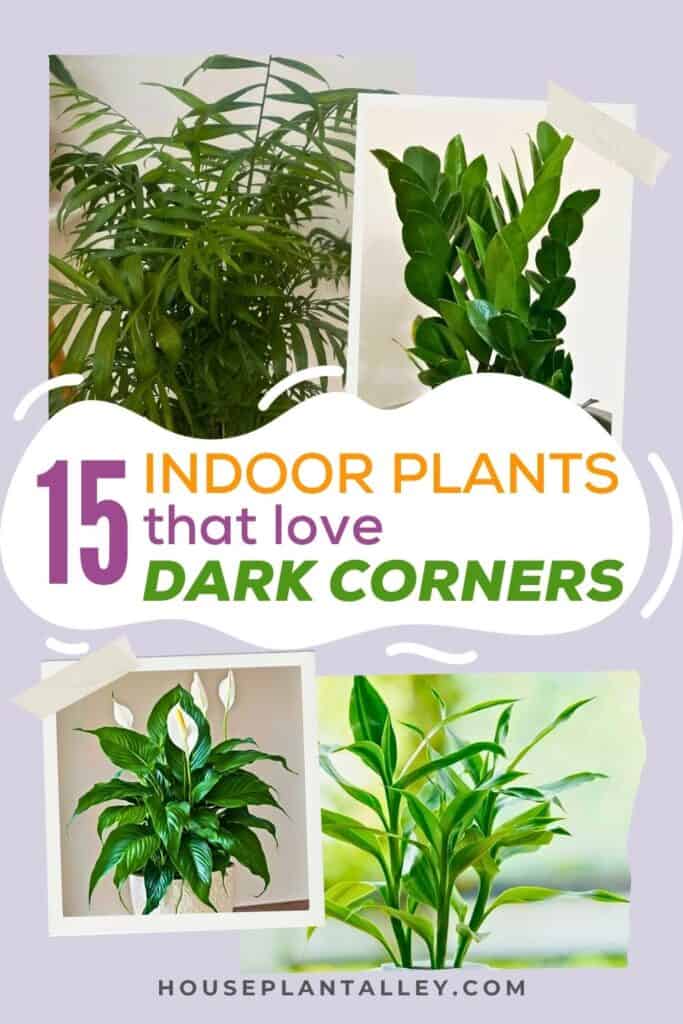
Contents
- 1 1. Snake Plant
- 2 2. Chinese Evergreen (Aglaonema)
- 3 3. ZZ Plant
- 4 4. Philodendron
- 5 5. Peace Lily
- 6 6. Pothos
- 7 7. Cast Iron Plant
- 8 8. Spider Plant
- 9 9. Parlor Palm (Chamaedorea Elegans)
- 10 10. English Ivy
- 11 11. Dracaena Janet Craig
- 12 12. Lucky Bamboo
- 13 13. Prayer Plant
- 14 14. Rubber Plant
- 15 15. Arrowhead Vine
1. Snake Plant

The Snake Plant (Sansevieria trifasciata) is a striking succulent with tall, rigid leaves that grow vertically from a basal rosette. Its sword-shaped foliage typically features distinctive patterns of green and yellow variegation, though solid-colored varieties also exist. Known for its exceptional air-purifying abilities and extreme durability, this plant has earned the nickname “mother-in-law’s tongue” due to its sharp, pointed leaves. Snake plants can grow anywhere from 6 inches to several feet tall, depending on the variety and growing conditions.
- Light: Tolerates low light but thrives in indirect bright light; can handle some direct sun
- Water: Allow soil to dry completely between waterings; water less in winter
- Soil: Well-draining potting mix; preferably succulent or cactus soil
- Humidity: Adaptable to any humidity level
- Temperature: 60-85°F (15-29°C)
- Fertilizer: Light feeding with balanced fertilizer during growing season
- Container: Pot with drainage holes; prefers to be slightly root-bound
- Propagation: Division or leaf cuttings in water or soil
2. Chinese Evergreen (Aglaonema)

Chinese Evergreen (Aglaonema) is a popular houseplant known for its striking foliage and exceptional tolerance of low-light conditions. Native to tropical and subtropical regions of Asia, this plant features large, oval-shaped leaves with attractive variegation patterns ranging from dark green to silver, pink, and red. Its compact growth habit and air-purifying qualities make it an excellent choice for offices, homes, and other indoor spaces where light may be limited.
- Light: Thrives in low to moderate indirect light; can tolerate fluorescent lighting; avoid direct sunlight
- Water: Keep soil consistently moist but not waterlogged; allow top inch of soil to dry between waterings
- Soil: Well-draining potting mix rich in organic matter
- Humidity: Prefers moderate to high humidity; mist leaves occasionally
- Temperature: Maintains best growth between 65-80°F (18-27°C)
- Fertilizer: Feed monthly with balanced liquid fertilizer during growing season
- Soil pH: 5.6-6.5
3. ZZ Plant
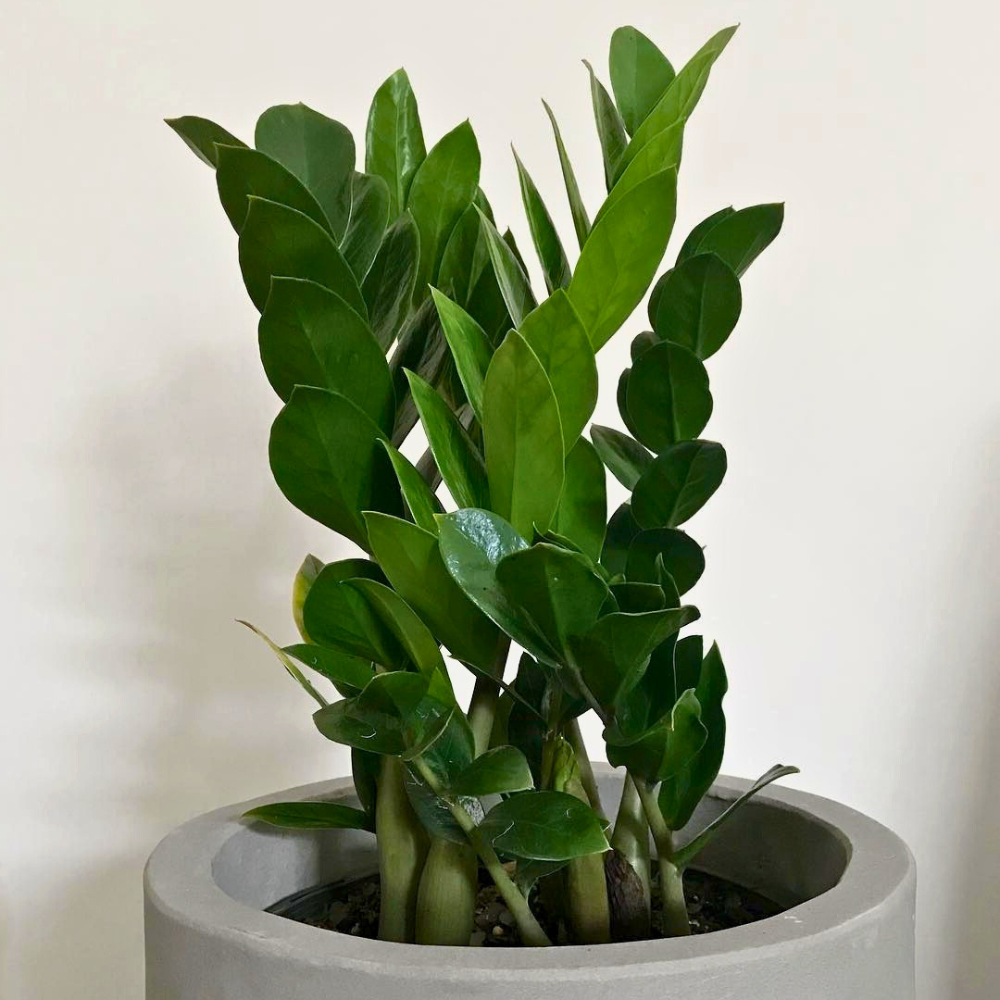
The ZZ Plant (Zamioculcas zamiifolia) is a hardy, tropical perennial native to Eastern Africa that has become increasingly popular as a houseplant due to its exceptional tolerance for low-light conditions and neglect. Its thick, glossy leaves grow on upright stems in a feather-like pattern, creating an elegant architectural appearance. The plant’s rhizomatous roots store water, allowing it to survive drought conditions, while its waxy foliage helps maintain moisture and gives it a perpetually fresh, polished look.
- Light: Tolerates very low light to bright indirect light; avoid direct sunlight
- Water: Allow soil to dry completely between waterings; water sparingly, especially in winter
- Soil: Well-draining potting mix; prefers slightly acidic soil
- Humidity: Adapts to average indoor humidity levels
- Temperature: Thrives in normal room temperatures between 65-75°F (18-24°C)
- Fertilizer: Light feeding with balanced fertilizer every 3-4 months during growing season
- Pot: Container with drainage holes to prevent root rot
- Growth Rate: Slow to moderate growth rate
- Toxicity: All parts are toxic if ingested; wear gloves when handling
4. Philodendron
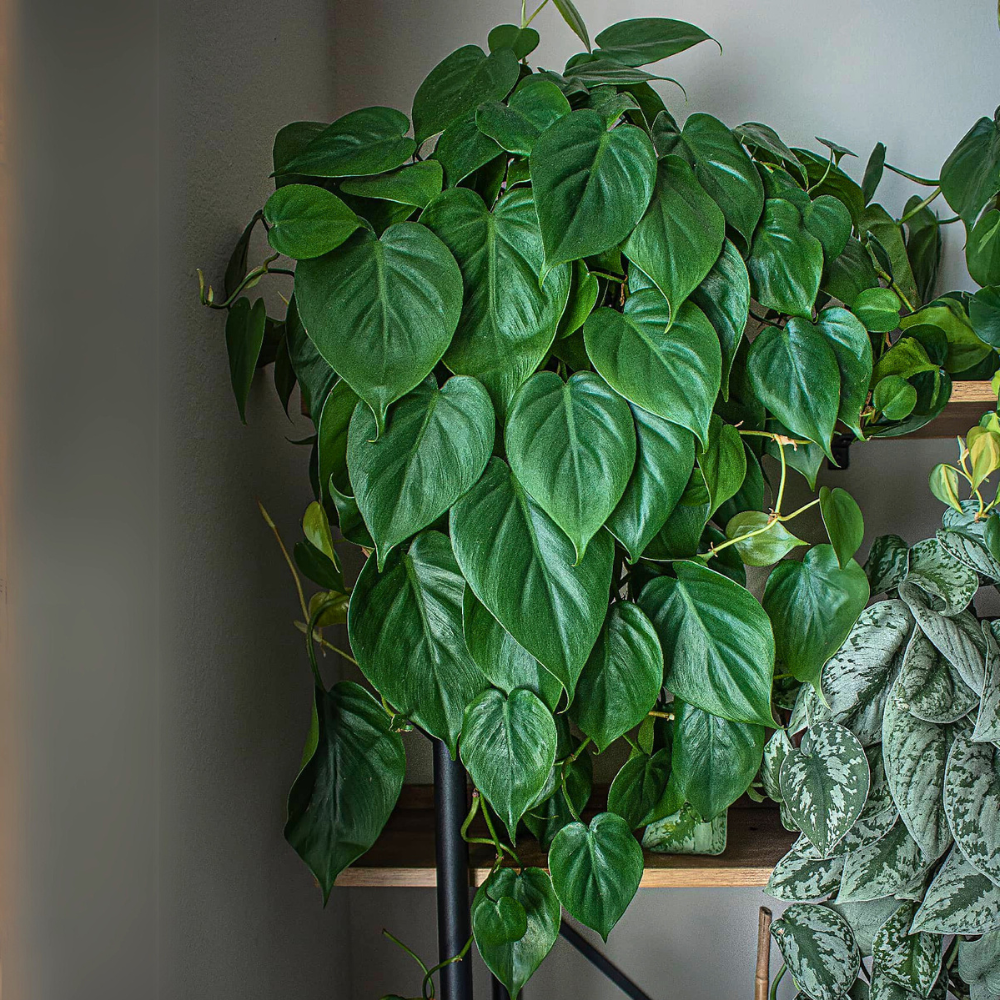
Philodendrons are popular tropical houseplants known for their adaptability and lush, heart-shaped foliage. These versatile plants come in both climbing and non-climbing varieties, with leaves that range from small to large and can be either glossy or matte in appearance. Native to tropical regions of the Americas, philodendrons are prized for their air-purifying qualities and their ability to thrive in indoor environments with minimal care.
- Light: Tolerates low to medium indirect light; avoid direct sunlight which can burn leaves
- Water: Allow top inch of soil to dry between waterings; reduce watering in winter
- Soil: Well-draining, loose potting mix rich in organic matter
- Humidity: Prefers moderate to high humidity; mist leaves or use a humidity tray
- Temperature: 65-80°F (18-27°C); protect from cold drafts
- Fertilizer: Feed monthly with balanced liquid fertilizer during growing season
- Soil pH: 5.0-6.0 (slightly acidic)
- Propagation: Easily propagated through stem cuttings in water or soil
5. Peace Lily
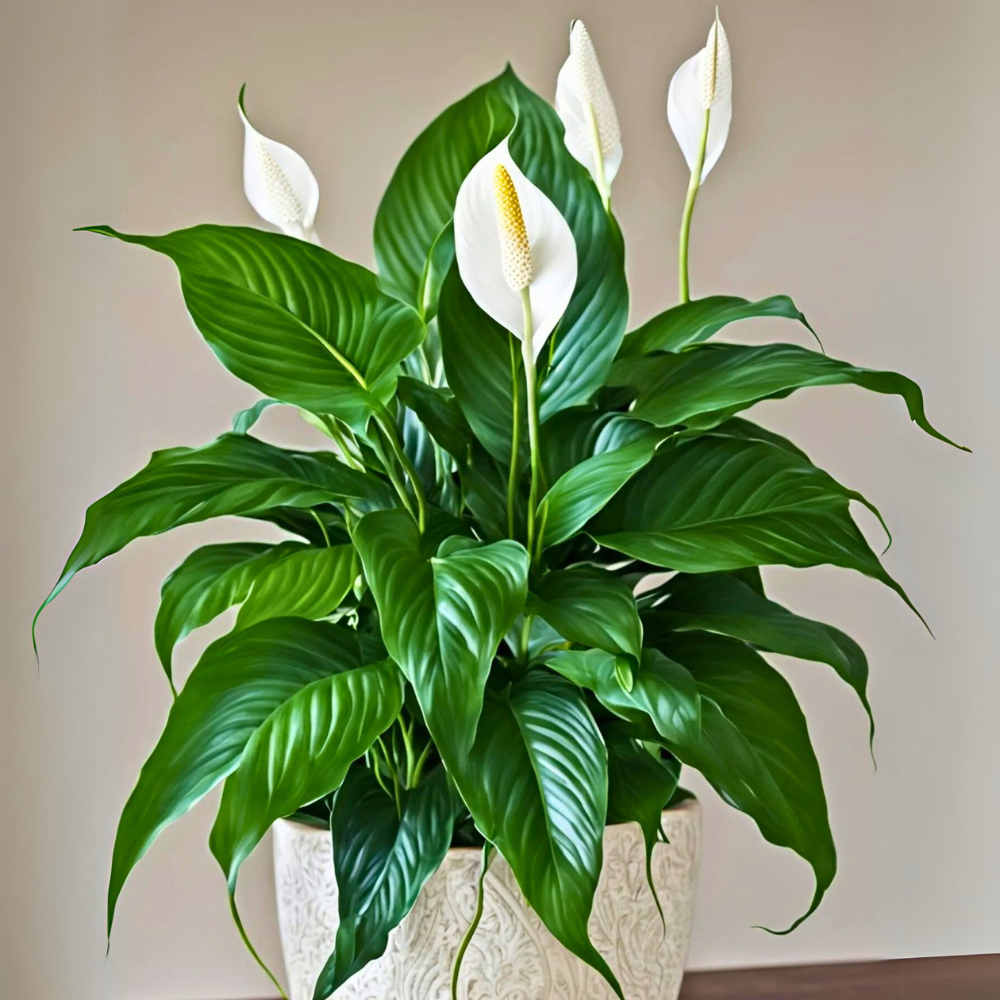
The Peace Lily (Spathiphyllum) is a popular houseplant known for its elegant white flowers and glossy dark green leaves. This tropical plant not only adds beauty to indoor spaces but also acts as a natural air purifier, removing common household toxins. The distinctive white “flower” is actually a modified leaf called a spathe, which surrounds the real flower spike or spadix. Peace lilies are particularly valued for their ability to bloom reliably indoors and their forgiving nature when it comes to care.
- Light: Thrives in low to moderate indirect light; avoid direct sunlight
- Water: Keep soil consistently moist but not waterlogged; water when top inch of soil feels dry
- Soil: Well-draining, rich potting mix with good organic content
- Humidity: Prefers high humidity; mist leaves regularly or use a humidity tray
- Temperature: Maintains best growth between 65-80°F (18-27°C)
- Fertilizer: Feed with balanced houseplant fertilizer every 6-8 weeks during growing season
- Pot Requirements: Container with drainage holes; repot every 1-2 years
- Toxicity: Mildly toxic to pets and humans if ingested
6. Pothos
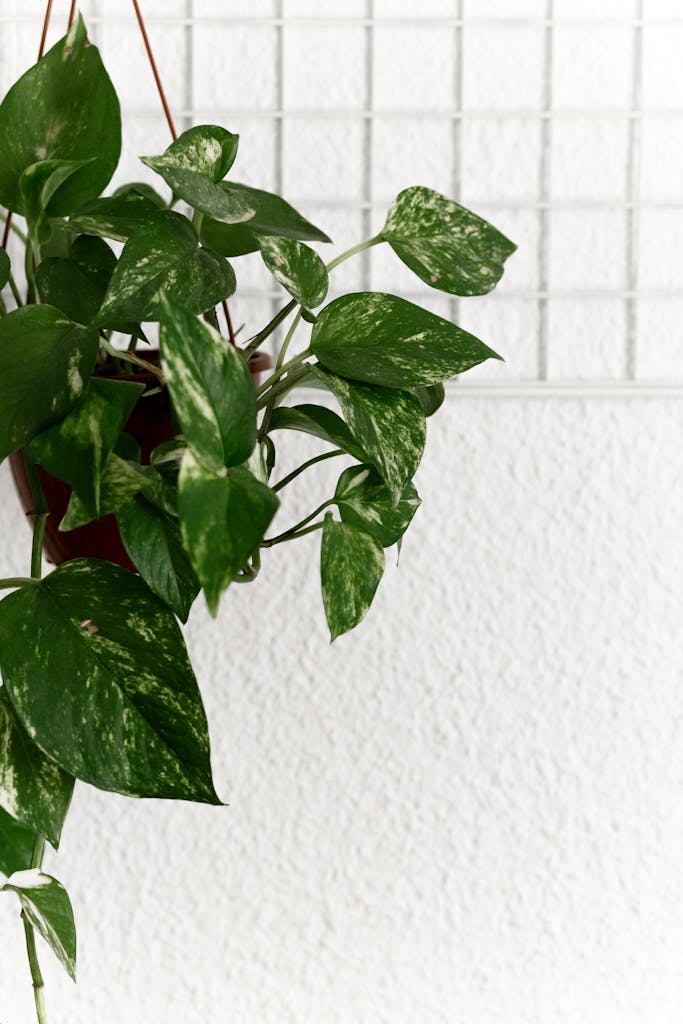
Pothos (Epipremnum aureum) is a popular and nearly indestructible houseplant known for its heart-shaped leaves and trailing vines. This adaptable plant comes in various varieties featuring different leaf patterns and colors, from the classic golden pothos to marble queen and neon varieties. Its ability to thrive in less-than-ideal conditions and remove indoor air pollutants makes it an excellent choice for beginners and experienced plant parents alike.
- Light: Tolerates low to bright indirect light; avoid direct sunlight which can burn leaves
- Water: Allow top 1-2 inches of soil to dry between waterings; water less frequently in winter
- Soil: Well-draining potting mix; performs well in standard houseplant soil
- Humidity: Adapts to average indoor humidity levels but enjoys occasional misting
- Temperature: Thrives in normal room temperatures between 60-80°F (15-27°C)
- Fertilizer: Feed with balanced liquid fertilizer every 4-6 weeks during growing season
- Container: Any container with drainage holes; can be grown in water
- Propagation: Easily propagated through stem cuttings in water or soil
7. Cast Iron Plant
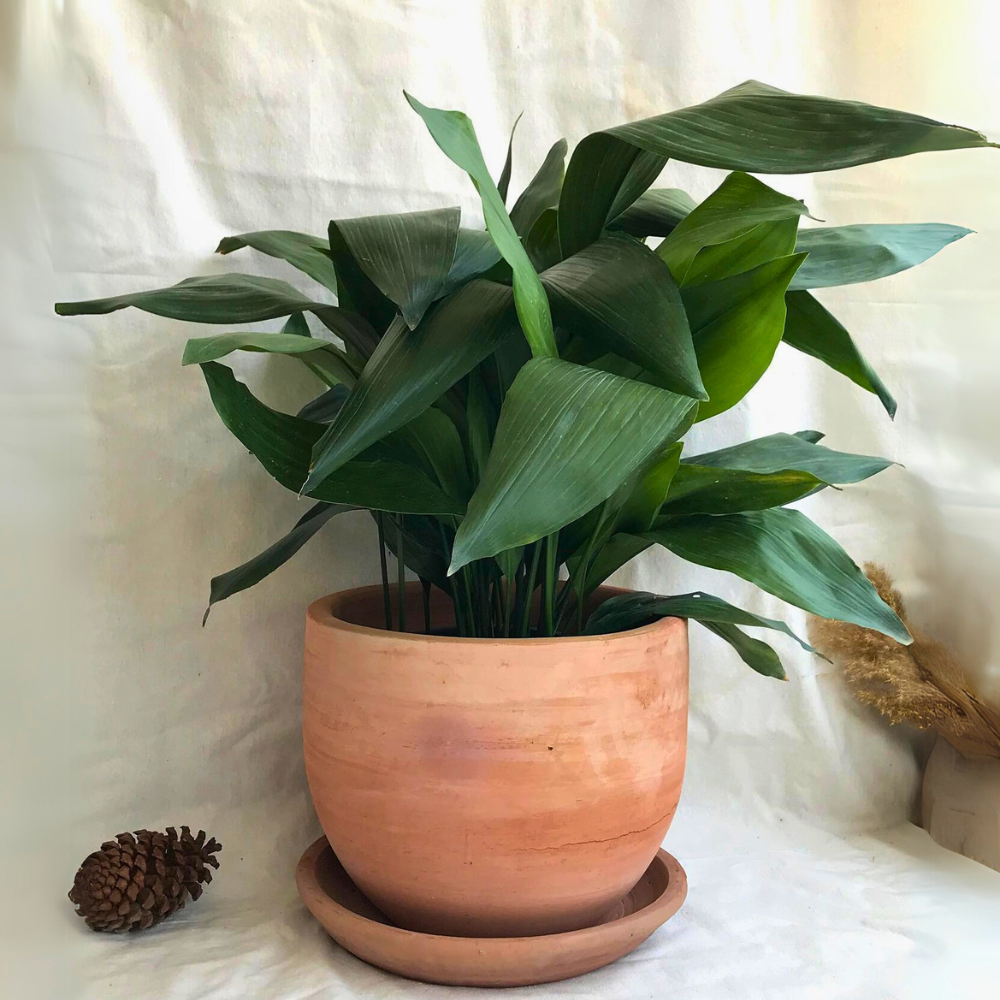
The Cast Iron Plant (Aspidistra elatior) lives up to its name with remarkable durability and tolerance for neglect, making it one of the toughest houseplants available. This slow-growing perennial features long, dark green leaves that grow upright from the base, reaching heights of 2-3 feet. Native to the forest floors of Japan and Taiwan, it earned its common name from its ability to withstand harsh conditions that would kill most other plants, including poor light, irregular watering, and temperature fluctuations.
- Light: Thrives in low to moderate indirect light; can tolerate deep shade; avoid direct sunlight
- Water: Allow soil to dry between waterings; tolerates occasional drought; water less in winter
- Soil: Well-draining potting mix with added organic matter
- Temperature: Comfortable in normal room temperatures between 60-75°F (15-24°C)
- Humidity: Adapts to average household humidity; no special requirements
- Fertilizer: Feed lightly with balanced houseplant fertilizer every 2-3 months during growing season
- Pot Type: Any container with drainage holes
- Soil pH: Slightly acidic to neutral (6.0-7.0)
8. Spider Plant
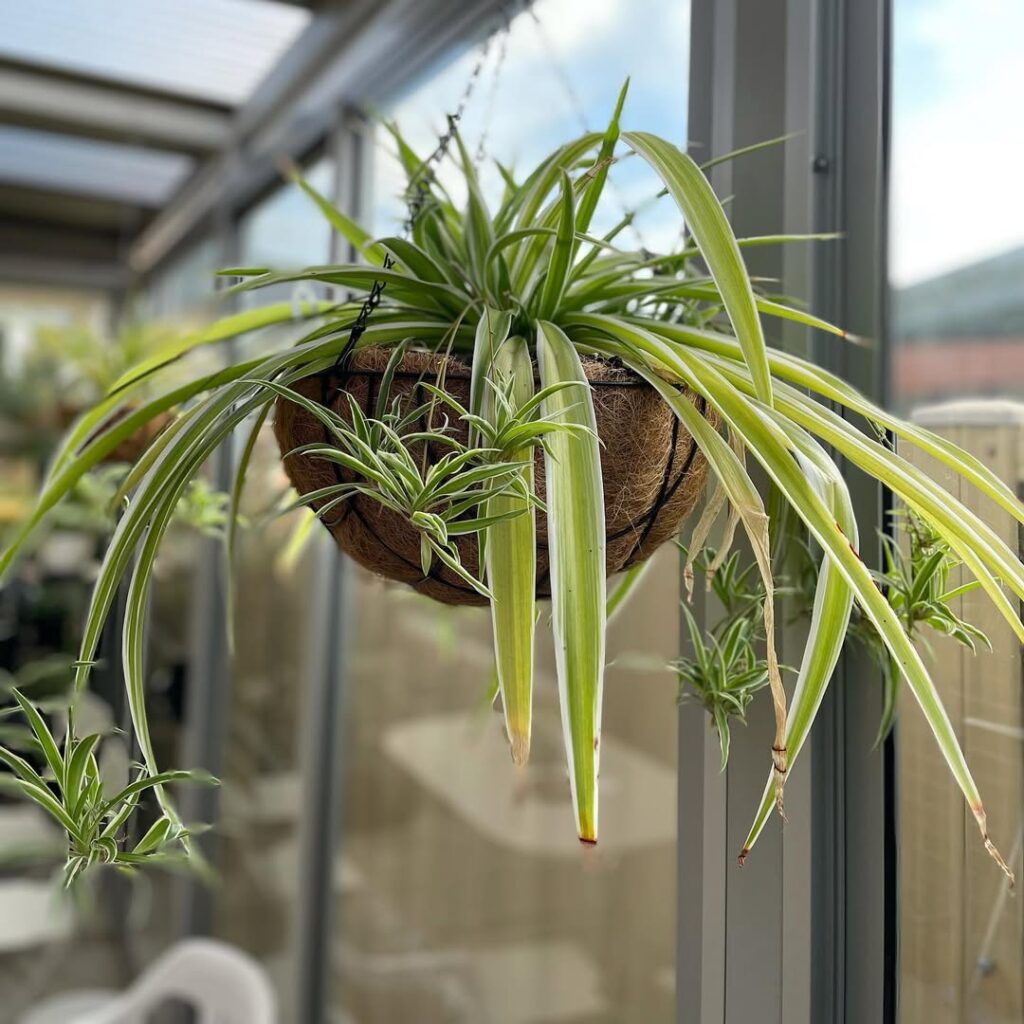
Spider plants (Chlorophytum comosum) are popular hanging houseplants known for their arching, grass-like leaves with white or cream stripes and their unique ability to produce baby plants, called “spiderettes,” on long stems. These hardy plants are excellent air purifiers and are considered one of the easiest houseplants to maintain, making them perfect for beginners. Their cascading growth pattern and adaptable nature have made them a classic choice for homes and offices.
- Light: Thrives in moderate to low indirect light; avoid direct sunlight which can scorch leaves
- Water: Keep soil slightly moist but not waterlogged; water when top inch of soil feels dry
- Soil: Well-draining, general-purpose potting mix
- Humidity: Tolerates average household humidity levels
- Temperature: Comfortable in normal room temperatures between 60-75°F (15-24°C)
- Fertilizer: Feed with balanced liquid fertilizer every 2-3 months during growing season
- Container: Choose pot with good drainage; hanging baskets work well
- pH: Prefers slightly acidic to neutral soil (6.0-7.2)
9. Parlor Palm (Chamaedorea Elegans)
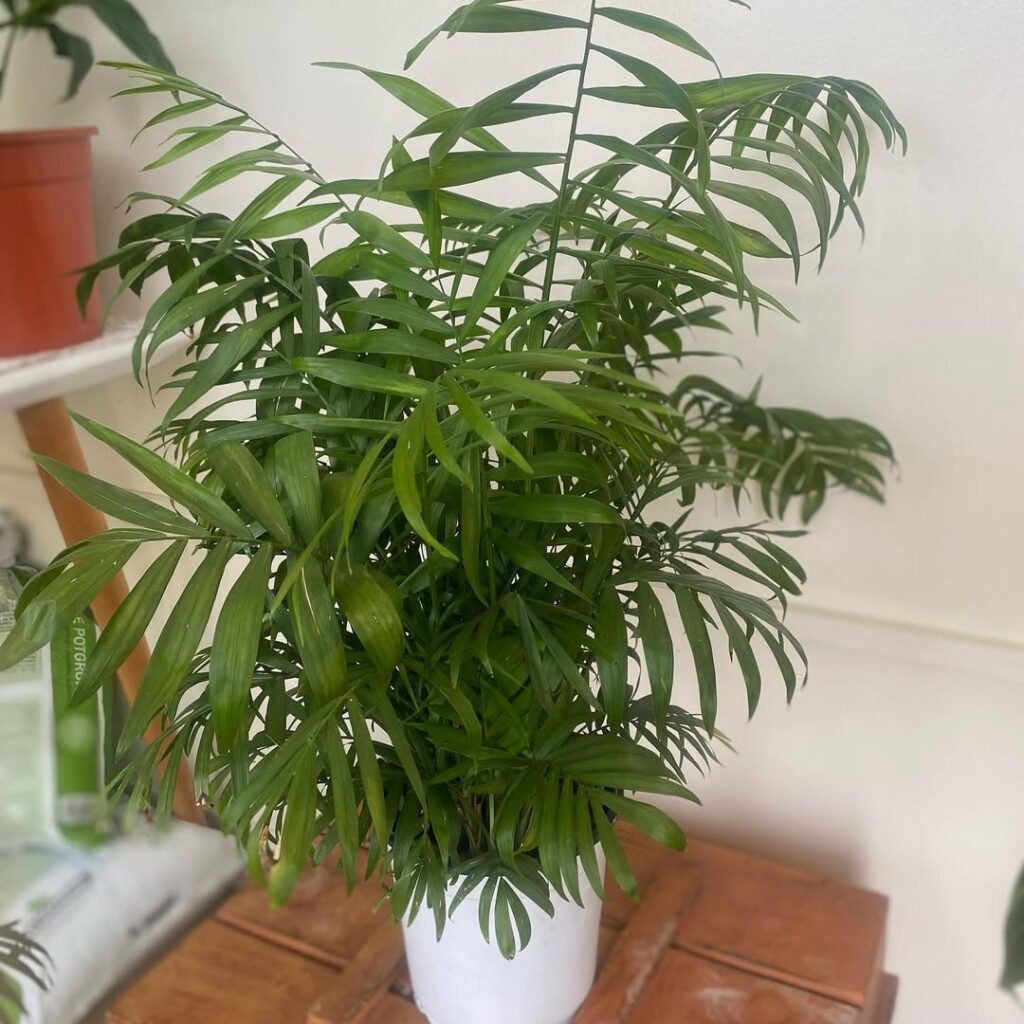
The Parlor Palm is a graceful, compact palm species that’s been a popular houseplant since Victorian times. Its slender stems support feathery, dark green fronds that create an elegant tropical appearance, typically growing to heights of 2-6 feet indoors. This palm’s natural tolerance for low light conditions and adaptability to indoor environments makes it an excellent choice for homes and offices, while its air-purifying qualities and non-toxic nature add to its appeal as a houseplant.
- Light: Thrives in low to moderate indirect light; avoid direct sunlight which can scorch leaves
- Water: Keep soil lightly moist but not waterlogged; water when top inch of soil feels dry
- Soil: Well-draining potting mix rich in organic matter
- Humidity: Prefers moderate to high humidity; benefits from regular misting
- Temperature: 65-80°F (18-27°C); avoid cold drafts
- Fertilizer: Feed with balanced liquid fertilizer every 2-3 months during growing season
- Container: Use pot with drainage holes; prefers to be slightly root-bound
10. English Ivy
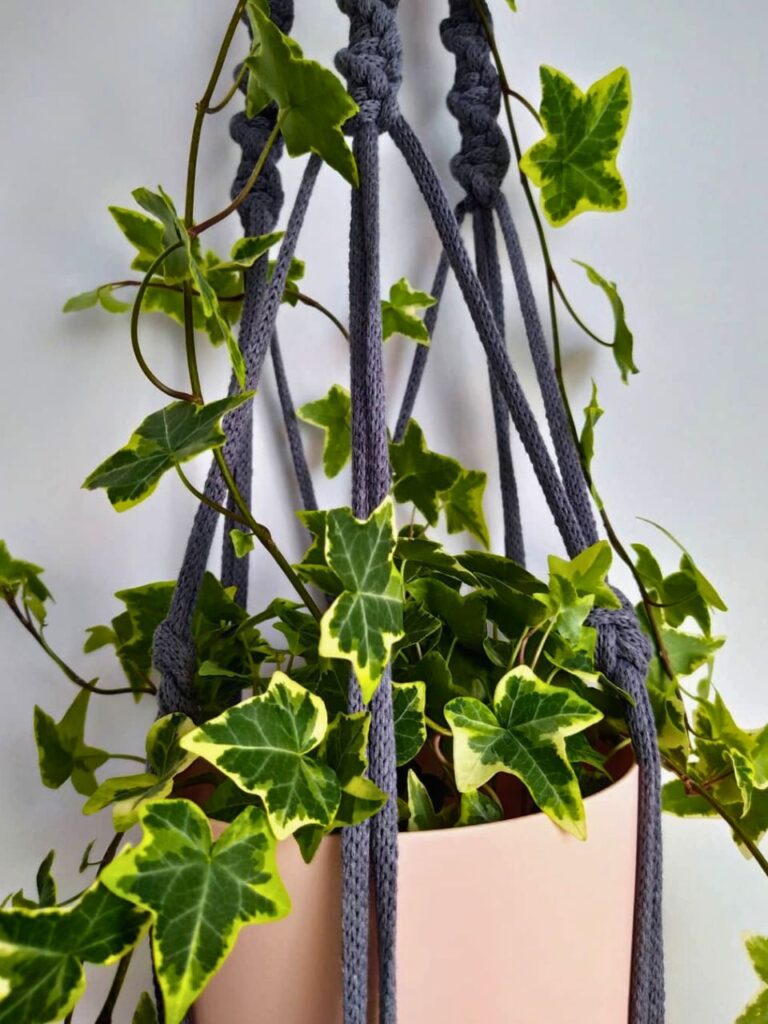
English Ivy (Hedera helix) is a versatile climbing vine that adapts well to indoor environments, making it a popular choice for hanging baskets and wall coverage. Its distinctive lobed leaves come in various patterns and colors, from deep green to variegated forms, and the plant’s trailing nature adds elegant visual interest to any indoor space. While it can be aggressive when grown outdoors, English Ivy remains manageable as a houseplant and helps purify indoor air.
- Light: Thrives in low to moderate indirect light; avoid direct sunlight
- Water: Keep soil consistently moist but not waterlogged; water when top inch of soil feels dry
- Soil: Well-draining potting mix rich in organic matter
- Humidity: Prefers moderate to high humidity; mist leaves regularly
- Temperature: Ideal range between 60-75°F (15-24°C)
- Fertilizer: Feed monthly during growing season with balanced liquid fertilizer
- Pruning: Trim regularly to control growth and maintain desired shape
11. Dracaena Janet Craig
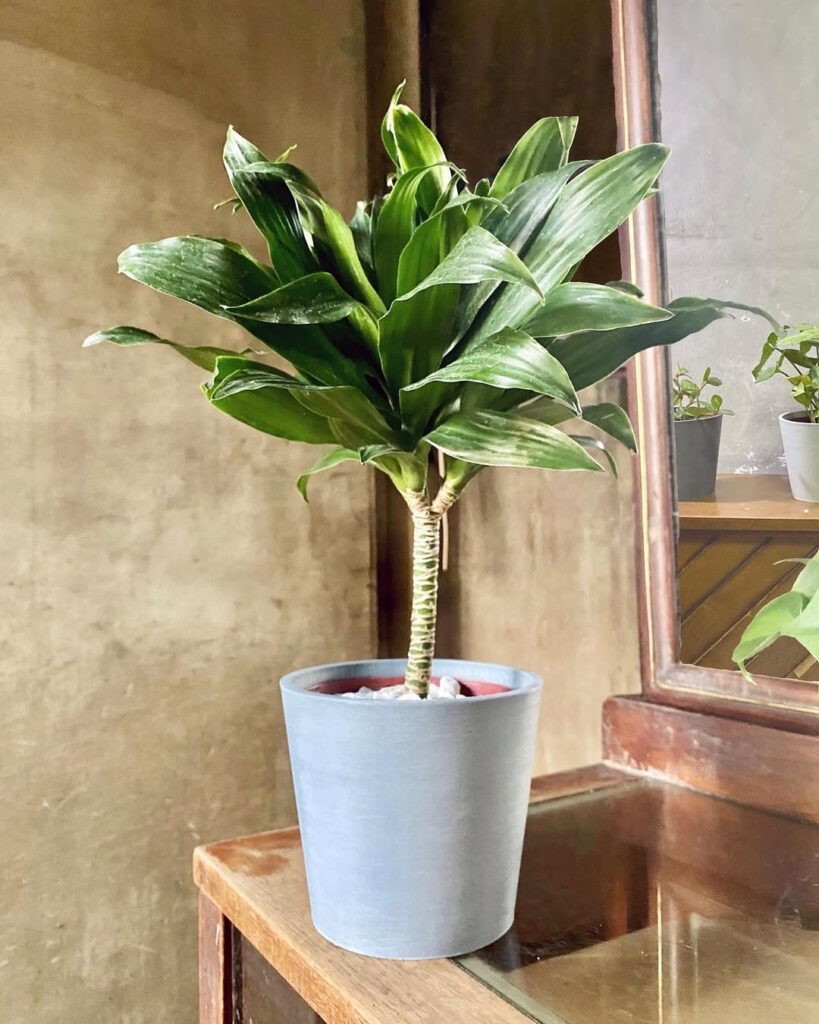
The Dracaena Janet Craig is a resilient, low-maintenance houseplant known for its glossy, dark green leaves that grow in dense clusters atop sturdy canes. This variety of Dracaena reaches heights between 4-10 feet indoors, making it an excellent choice for filling empty corners or creating natural room dividers. Its ability to tolerate low light conditions while maintaining its rich foliage makes it particularly popular for offices and homes with limited natural light.
- Light: Thrives in low to moderate indirect light; can tolerate fluorescent lighting; avoid direct sunlight
- Water: Keep soil lightly moist but not waterlogged; water when top inch of soil feels dry
- Soil: Well-draining potting mix rich in organic matter
- Humidity: Tolerates average indoor humidity; benefits from occasional misting
- Temperature: Prefers 65-80°F (18-27°C)
- Fertilizer: Feed with balanced houseplant fertilizer every 2-3 months during growing season
- Soil pH: 6.0-6.5
- Container: Use pot with drainage holes to prevent root rot
- Pruning: Remove yellow or brown leaves as needed; trim to control height
12. Lucky Bamboo

Lucky bamboo (Dracaena sanderiana) is a resilient indoor plant that grows well in low-light environments, making it a popular choice for homes and offices. Despite its name, it’s not actually bamboo but rather a member of the Dracaena family. This versatile plant can be grown in water or soil and is often shaped into decorative spirals or arrangements, bringing both greenery and good fortune according to feng shui principles.
- Light: Thrives in indirect, low to moderate light; avoid direct sunlight which can burn leaves
- Water: If grown in water, change water weekly and keep stems submerged; if in soil, keep consistently moist but not waterlogged
- Growing medium: Can grow in either water with pebbles for support or well-draining potting soil
- Temperature: Prefers warm environments between 65-95°F (18-35°C)
- Humidity: Enjoys moderate to high humidity
- Fertilizer: Feed monthly with diluted liquid fertilizer during growing season
- Container: Choose a container with good drainage if planting in soil; for water-grown specimens, use a tall vase that supports the stems
13. Prayer Plant
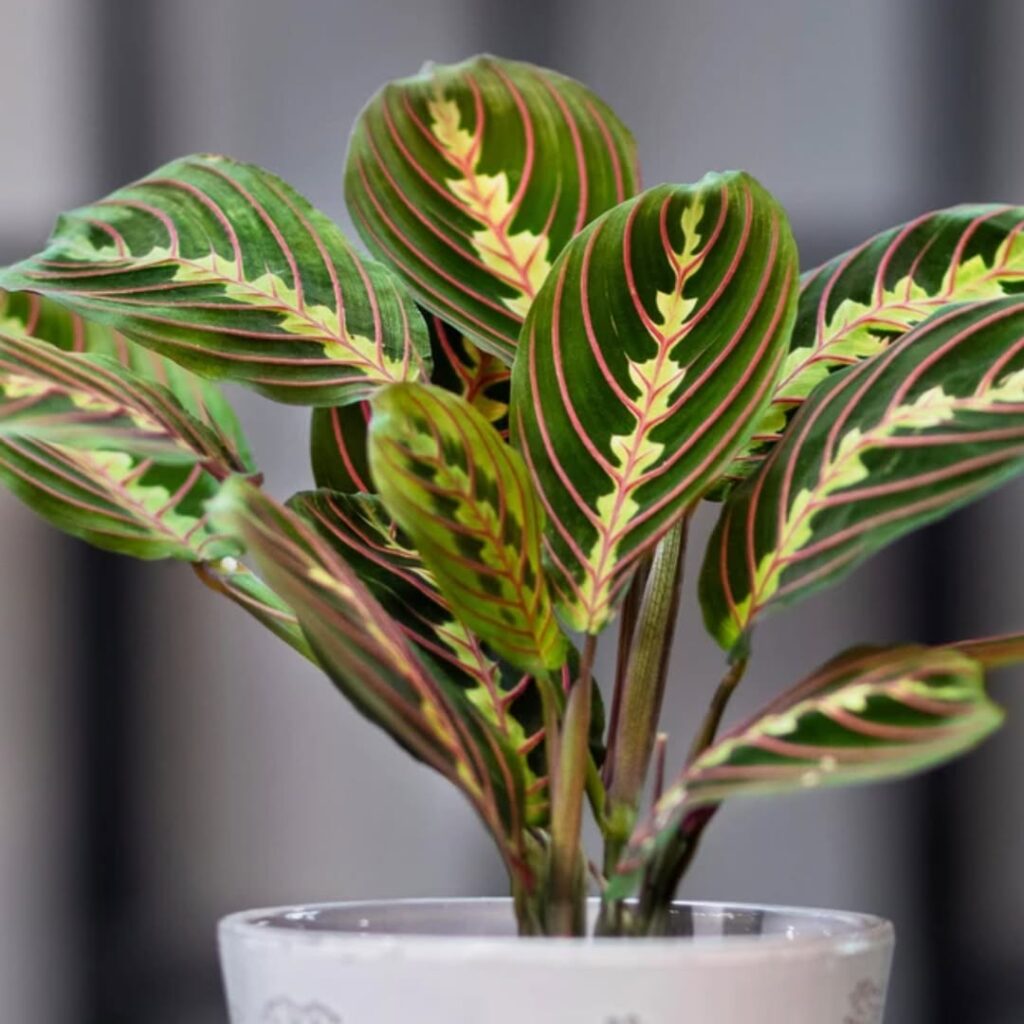
Prayer plants (Maranta leuconeura) are known for their stunning magenta-colored undersides that become visible when their leaves fold upward at night in a prayer-like position. During the day, the leaves display intricate patterns of dark green markings on a lighter green background, while the underside reveals its vibrant magenta hue. This distinctive coloring, combined with their unique daily movement pattern, makes them an enchanting choice for indoor spaces.
- Light: Thrives in low to moderate indirect light; avoid direct sunlight which can fade the leaves
- Water: Keep soil consistently moist but not waterlogged; water when top inch of soil feels dry
- Humidity: Requires high humidity (50-60%); benefits from regular misting or humidifier
- Soil: Well-draining, rich potting mix with organic matter
- Temperature: Prefers warm conditions between 65-80°F (18-27°C)
- Fertilizer: Feed monthly during growing season with balanced, water-soluble fertilizer
- Container: Use pot with drainage holes to prevent root rot
14. Rubber Plant
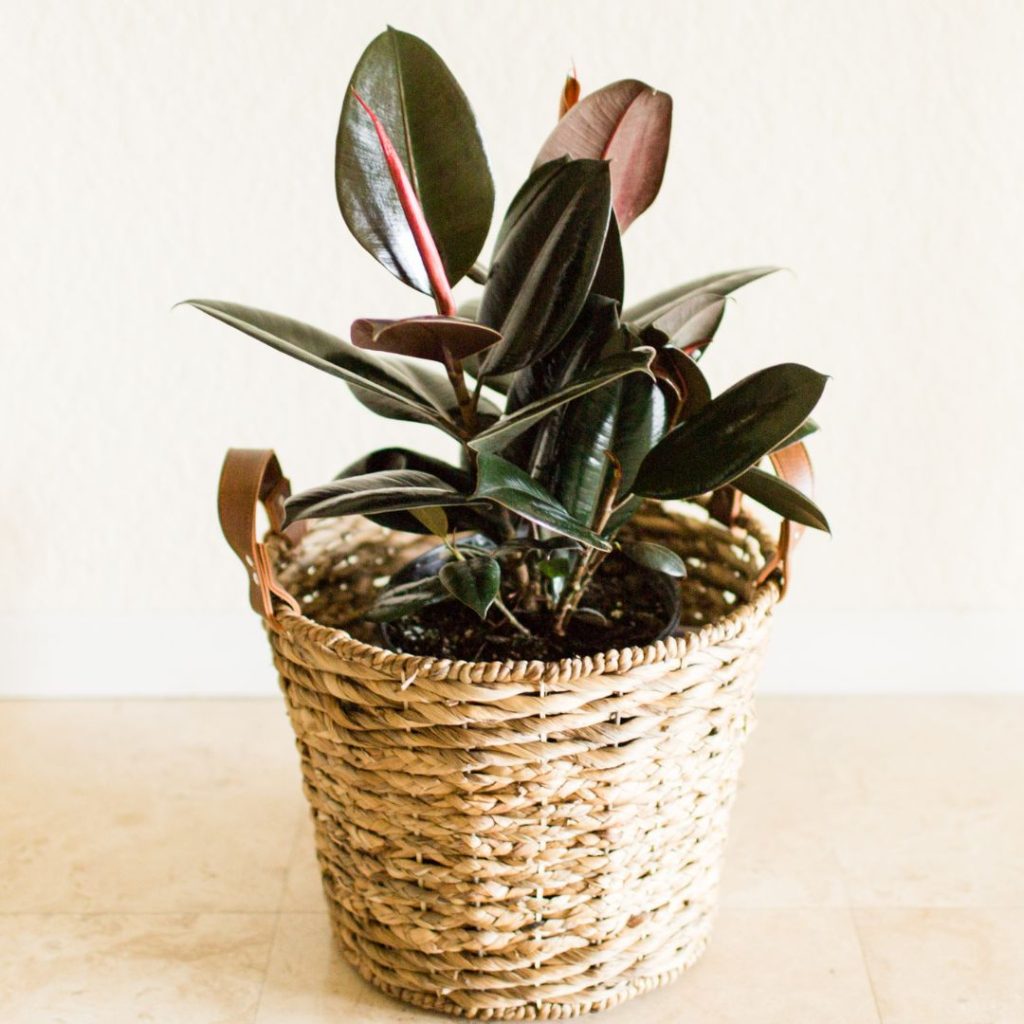
The Rubber Plant (Ficus elastica) is a popular and resilient houseplant known for its large, glossy leaves and ease of maintenance. These plants can grow quite tall indoors, reaching heights of 6-10 feet when properly cared for, and their thick, leathery leaves add a bold architectural element to any room. Their adaptability to various indoor conditions and forgiving nature makes them an excellent choice for both novice and experienced plant enthusiasts.
- Light: Tolerates low to moderate indirect light; avoid direct sunlight which can scorch leaves; best growth occurs in bright, indirect light
- Water: Allow top 1-2 inches of soil to dry between waterings; water less frequently in winter
- Soil: Well-draining potting mix rich in organic matter; pH 6.0-7.0
- Humidity: Moderate humidity levels (40-60%); tolerates average home humidity
- Temperature: 60-75°F (15-24°C); protect from cold drafts
- Fertilizer: Feed monthly during growing season with balanced liquid fertilizer
- Potting: Repot every 2-3 years or when roots become crowded
15. Arrowhead Vine
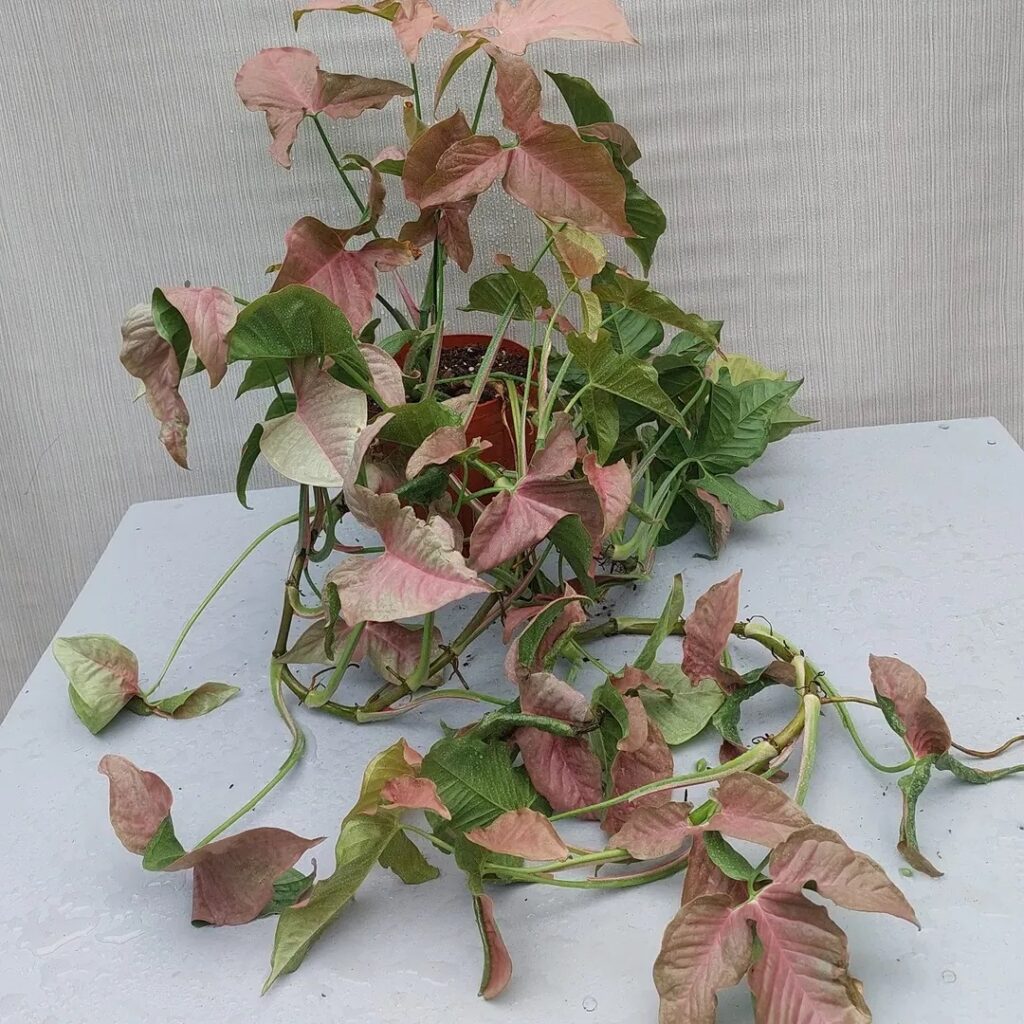
Arrowhead vine (Syngonium podophyllum) thrives in shaded indoor environments, making it an excellent choice for rooms with minimal natural light. This tropical climbing plant gets its name from its distinctive arrow-shaped leaves, which start as solid green and may develop variegated patterns as they mature. As the plant ages, the leaves can split into multiple segments, creating an even more dramatic appearance. The vine’s adaptable nature and low-light tolerance make it a popular choice for hanging baskets, tabletops, or climbing supports in darker corners of homes and offices.
- Light: Tolerates low to medium indirect light; avoid direct sunlight which can scorch leaves
- Water: Keep soil consistently moist but not waterlogged; water when top inch of soil feels dry
- Soil: Well-draining potting mix rich in organic matter
- Humidity: Prefers moderate to high humidity; mist leaves regularly
- Temperature: 60-75°F (16-24°C)
- Fertilizer: Feed monthly with balanced liquid fertilizer during growing season
- Container: Use pot with drainage holes to prevent root rot
- Growth Pattern: Climbing or trailing growth habit; can be pruned to maintain compact shape
